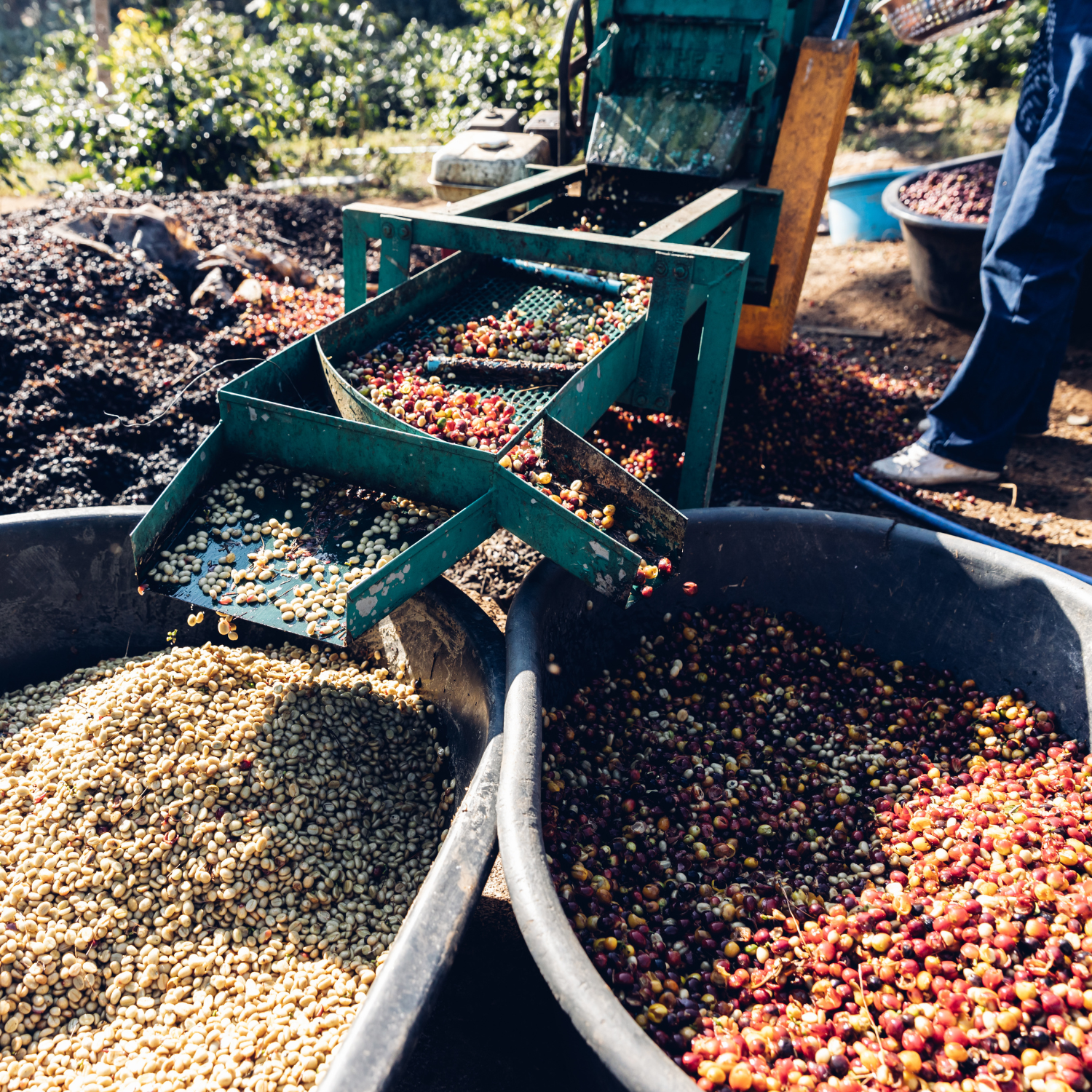
The art of coffee harvesting
Harvesting the coffee is a crucial step in coffee production that significantly affects the taste and quality of the final product. For Ethiopian highland coffees, the ripening period of the coffee cherries takes up to ten months. During this time, the cherries change from green to yellow to red, indicating that they are fully ripe and ready for harvest. The red cherries have reached the optimal stage to produce the aromatic green coffee. It is important to ensure that only the red cherries are picked, as green or overripe black cherries can negatively affect the taste of the coffee. Green cherries contain unripe acids and little aroma, while overripe cherries taste rotten and fermented.

The timing of the harvest varies depending on geographical and climatic conditions and can differ from country to country. In Ethiopia, the coffee harvest typically takes place between October and January. However, exact harvest times can vary depending on the region and the prevailing weather conditions. Particularly heavy rain can cause coffee cherries to ripen in just two days, which can significantly affect the harvest time.
An important aspect of coffee harvesting is the care and precision with which the cherries are picked. In many coffee growing regions, the cherries are harvested by hand to ensure that only the ripest and highest quality cherries are selected. This laborious process requires a great deal of skill and experience, as the coffee cherries do not ripen at the same time, but are spread out over a period of two to three months. Harvesting is therefore a continuous process that is carried out daily to ensure that no cherries overripe or are lost.
Once the cherries are picked, it is crucial that they are processed quickly to preserve the quality of the coffee. Ideally, the cherries should be processed within five hours of harvesting to avoid any unwanted fermentation that could affect the taste of the coffee.
Overall, harvesting coffee is a demanding process that requires a lot of attention and care. The quality of the final product depends largely on the way the cherries are picked and processed. Through years of experience, coffee farmers have developed a trained eye to ensure that only the best cherries are selected, which forms the basis for high-quality specialty coffees.
